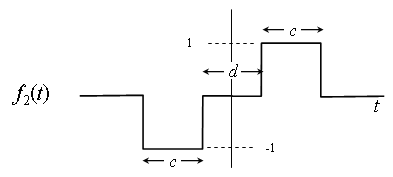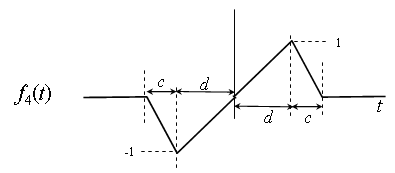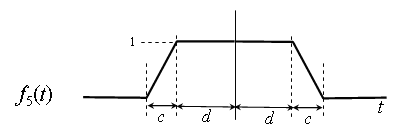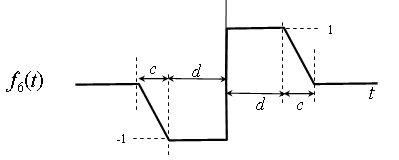rect, tri, and
step functions. Plot each function in Matlab using sample
values of the parameters.
| (a) |  | 
|
| (b) |  | 
|
| (c) |  | 
|
- Study the following Matlab function to see how it generates a discrete-time
exponential signal. Then use the function to plot the exponential x[n] = (0.9)^n
over the range n = 0:20.
function y = genexp(b, L, n0) %GENEXP generate an exponential signal % usage: Y = genexp( B, L, N0 ) % % B input scalar giving ratio between terms % L length of generated signal % N0 starting index (integer) % % Y output signal Y(1:L) if (L<=0) error('GENEXP: length not positive') end nn = n0 + [1:L]' - 1; % vector of indices y = b.^nn; - In many derivations the exponential sequence
a^n u[n]
must be summed over a finite range. This sum is known in closed form:

Use the results from the previous part to sum an exponential and compare the results to the formula (evaluated in Matlab)
- Another way to generate an exponential signal is to use a recursive formula given
by a difference equation. The signal y[n] =
a^n u[n] is the solution to the following
difference equation when the input, x[n] is an impulse:
y[n] - a y[n-1] = x[n]
with initial conditions y[-1] = 0. In Matlab the function
filterwill implement a difference equation. Usefilterto generate the same sequence as in part (a)
mtlb, seperate the syllables so that the phrase is
"labmat" and plot the results. Reverse the signal (play it backwards) and plot the results.
Remember to show the matlab operations you used for these tasks.